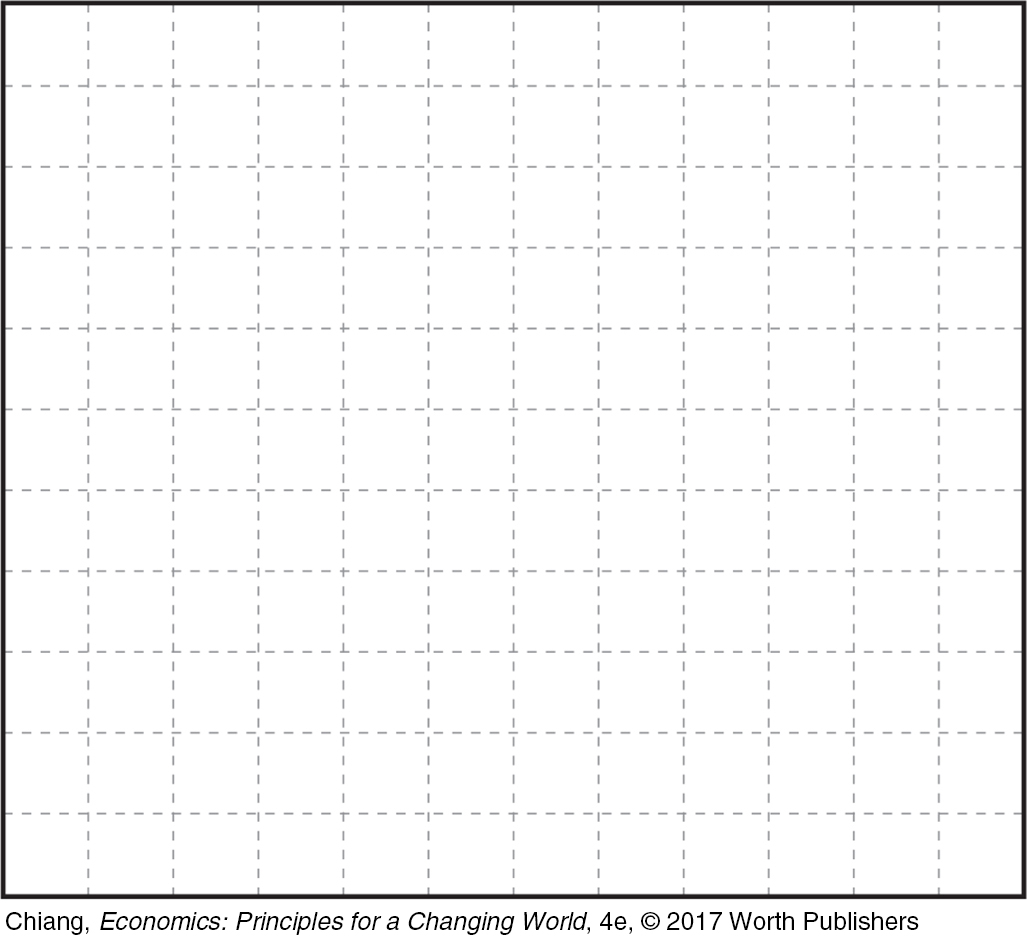QUESTIONS AND PROBLEMS
Check Your Understanding
Question 25.1
1. Why does the Phillips curve become very steep when unemployment is low and rather shallow when unemployment is high?
Question 25.2
2. Does the long-
Question 25.3
3. Explain why inflation accelerates if policymakers use monetary and fiscal policy to keep unemployment below the natural rate.
Question 25.4
4. Does having rational expectations mean that all economic actors act rationally and are always correct?
Question 25.5
5. Would policymakers prefer a Phillips curve with a steep or a shallow slope? Why?
Question 25.6
6. A negative supply shock (a huge natural disaster or significant energy price spike) would do what to the short-
Apply the Concepts
Question 25.7
7. Why would policymakers want to drive unemployment below the natural rate, given that inflation will result?
Question 25.8
8. Why are inflationary expectations so important for policymakers to keep under control? When a supply shock such as an oil price spike hits the economy, does it matter how fast policymakers attempt to bring the economy back to full employment?
Question 25.9
9. How are the long-
Question 25.10
10. Would the credibility of policymakers’ (Congress and the Fed) commitment to keeping inflation low have an effect on inflationary expectations when the economy is beset by a supply shock?
Question 25.11
11. Explain why those who favor the rational expectations approach to modeling the economy do not favor discretionary policymaking.
Question 25.12
12. If efficiency wages are widespread throughout the economy but most workers feel they are significantly underpaid, will paying workers more prevent them from shirking?
In the News
Question 25.13
13. Former Fed Chair Ben Bernanke noted that “in the 1970s the public had little confidence that the Fed would keep inflation low and stable.” As a result, when oil prices rose, wages and prices quickly followed. This caused the Fed to have to increase interest rates sharply to curtail inflation. Do people have a different perspective on the Fed today than they did in the past?
692
Question 25.14
14. About every year, Congress is tasked with increasing the debt ceiling that allows the government to continue borrowing. In past decades, such legislation would pass easily because it was authorizing the payment of expenses already incurred. However, in recent years, some congressional leaders took the drastic approach of opposing to raise the debt ceiling as a way to reign in government spending. If these leaders were successful in preventing the debt ceiling from being raised, what would be some benefits and costs of this action?
Solving Problems
Question 25.15
15. The Phillips curve of the 1960s showed a negative relationship between the inflation rate and unemployment. Use the following data on inflation and unemployment to plot a Phillips curve from 2011 to 2015. Does the same relationship between inflation and unemployment hold in 2011–
| Year | Inflation Rate | Unemployment Rate |
| 2011 | 3.2% | 8.9% |
| 2012 | 2.1% | 8.1% |
| 2013 | 1.5% | 7.4% |
| 2014 | 1.6% | 6.2% |
| 2015 | 0.1% | 5.3% |

WORK IT OUT  | interactive activity
| interactive activity
Question 25.16
16. During the recession from December 2007 to June 2009, the U.S. economy lost a total of 7,163,000 jobs. How many jobs were lost per month, on average? Suppose that a healthy economy generates an average of 200,000 jobs per month. At this rate, how long would it take the economy to gain back the number of jobs it had lost? According to data from the Bureau of Labor Statistics, the U.S. economy gained 5,485,000 jobs from June 2009 to June 2013. What was the average number of jobs per month created during the first four years of recovery? Given your answers to the previous two questions, what does this suggest about the pace of economic recovery after the 2007–
 USING THE NUMBERS
USING THE NUMBERS
Question 25.17
17. About how long prior to the 2007–
Question 25.18
18. According to By the Numbers, what was the value of monthly real retail sales when it reached its lowest point in 2009? By what percentage did monthly real retail sales increase from 2009 to 2015?